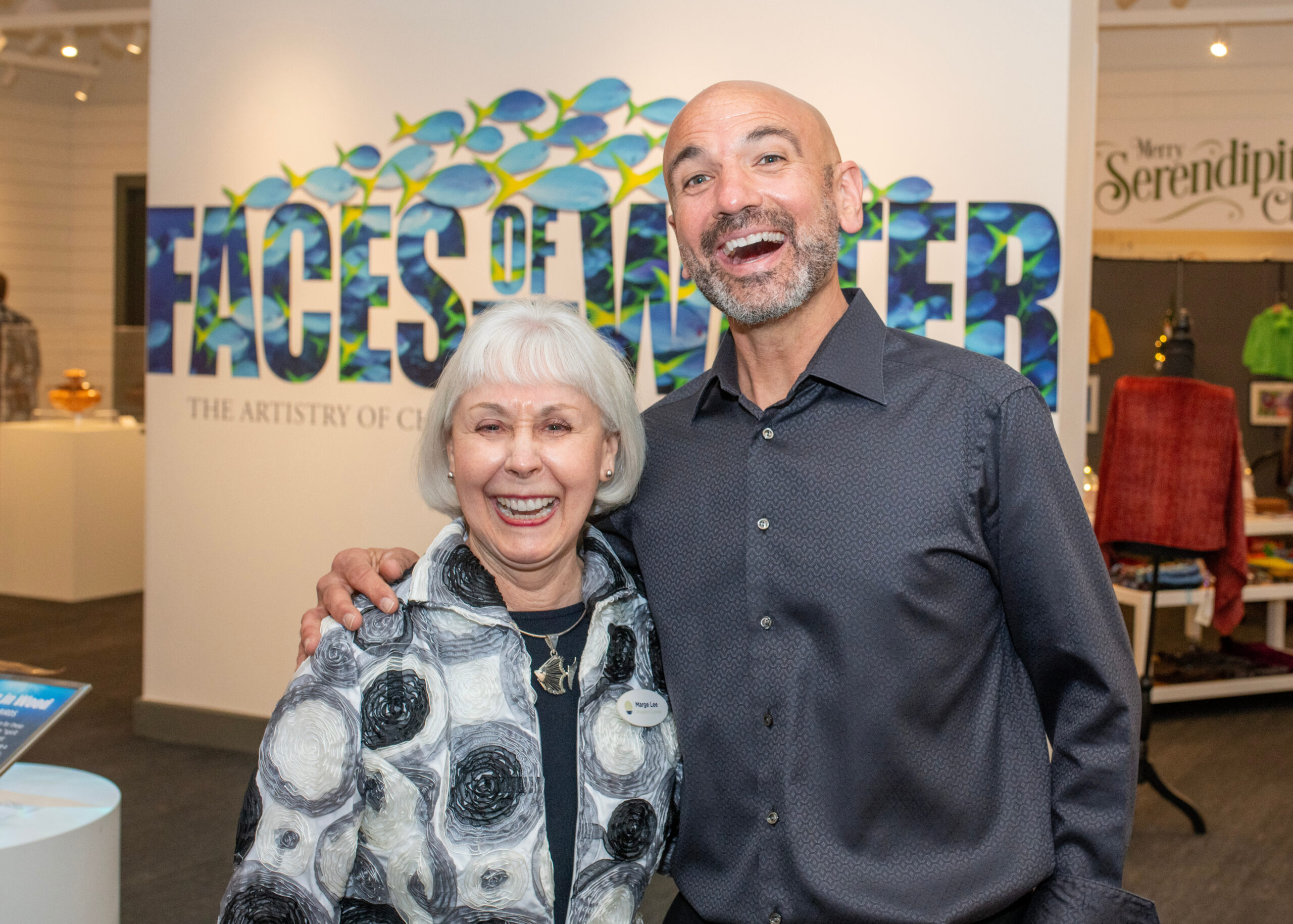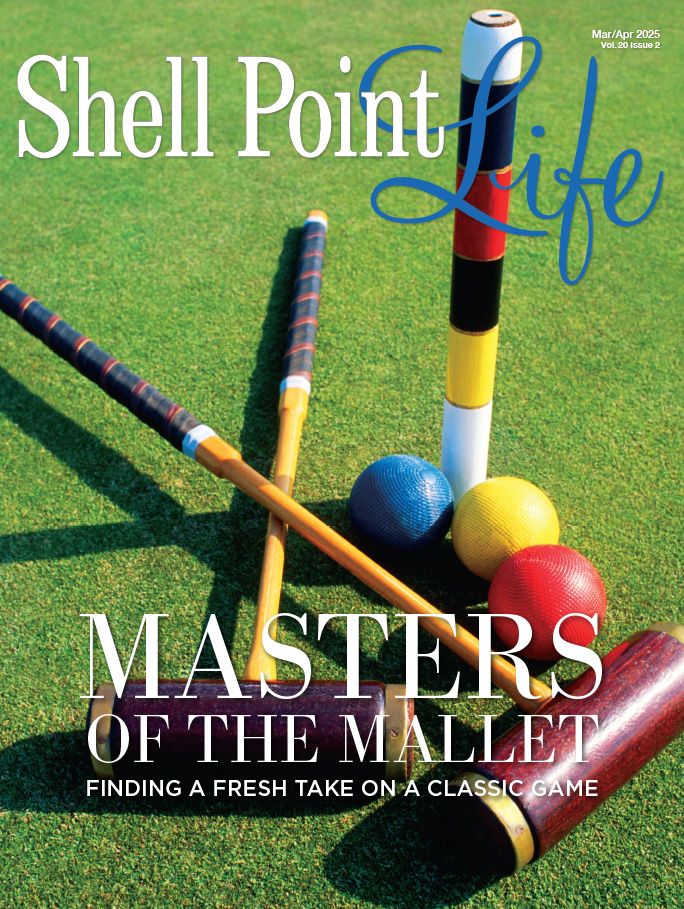The Next Thomas Edison?
photos by Chuck Durrell
One of the outstanding geniuses in the history of technology, Thomas Edison earned patents for more than a thousand inventions, including the incandescent electric lamp, the phonograph, the carbon telephone transmitter, and the motion-picture projector. So it stands to reason that an important part of Fort Myers’ famous Edison Festival of Light celebration be a Science Fair and Inventors Fair. The Thomas A. Edison Regional Science Fair began in 1958, and the Inventors Fair was added to the education mix in 1988. This year’s competition took place on January 29, 2005, at Harborside Convention Center.
|
These Shell Point residents participated in judging: Gil Keeley, Janet Bendall, Chuck Durrell, Martha Ryckman, Mike Klein, and Laymon Miller. |
This year, Shell Point Retirement Community joined forces with the Alvin A. Dubin Alzheimer’s Resource Center to take part in the annual Thomas A. Edison Regional Science and Inventor’s Fair for the first time. Shell Point and the Dubin Center created two new awards called the “Great Idea Awards.” The winners of each of these awards would receive a prize of $100. The awards were based on a set of criteria for the science project and invention that “best focused on issues related to seniors, and either noted the positive aspects of aging, or dealt beneficially with an issue related to aging.”
Next, a team of Shell Point residents were asked to judge the entries, which were on display in the Harborside Convention Center. The Shell Point resident judges, Chuck Durrell, Laymon Miller, Martha Ryckman, Mike Klein, Gil Keeley, and Janet Bendall, have retired from all walks of life. Bendall, an ex-school teacher who still works with youngsters as a volunteer at the Brightest Horizons Daycare center, remarked, “I was very impressed with the young people who presented projects at this fair. Even the elementary age students had thought through their problem to come up with a solution for which they made a model.”
“The fair was very well organized,” the judges agreed. “These students have exhibited on a local level and some of the winners will go on to the state level. Some of the other judges at the fair included college students who had won when they were in elementary or high school and wanted to return to help the next generations.”
Approximately 500 entries from grades K-12 were shown in the Inventors Fair, while the Science Fair had 300 entries from grades 6-12. “It was interesting to see how the very young students were able to work on simple projects, which will lead to the thinking and reasoning skills needed to work on more advanced projects in years to come,” said judge Martha Rykman, also a retired school teacher.
Judges Gil Keeley and Mike Klein were both “amazed at the capabilities of the students and impressed with their in-depth knowledge of the subjects.” They agreed that some of the projects “really hit home for people our age.”
|
Len Jennings of ABC7 and Lynn Schneider of Shell Point Retirement Community present the Great Idea Award to Kenny Cabana for his “Med-Alarm” invention in the Inventors Fair |
The Inventor’s Fair winner of Shell Point’s “Great Idea” award was Kenny Cabana, whose project, a med-alert, was a solution for his grandmother’s problem of forgetting to take her medications at the right times. With the help of his dad, Kenny inserted a small alarm clock in the lid of a medicine bottle, which could be set for the proper times for his grandma to take her medications. Shell Point judge Laymon Miller, retired sound and vibration engineer, noted that, “There were lots of innovative ideas that originated with a problem. I was very impressed with the students’ ability to communicate their ideas to us.”
All the judges were impressed with the Dubin “Great Idea” award winner for the Science Fair. A junior at Canterbury School, Stephanie Hon, tackled the subject, “The Effects of Intracerebroventricular Passive Immunization of the Deposition of Beta-Amyloid and the Occurrence of Perimicrovascular Hemorrhages.” Her grandmother suffers from Alzheimer’s disease, so testing an innovative way to treat this memory-robbing disorder was an inspirational topic for her and the perfect subject for the Dubin Center’s award. Hon injected plaque-fighting antibodies into the brain fluid of mice infected with Alzheimer’s, thus reducing plaque buildup without causing bleeding.
Shell Point judge and photographer Chuck Durrell summed it up when he said, “It was a wonderful fair. I enjoyed seeing (and photographing) the enthusiasm of the students as they talked about their projects. I’m amazed at the amount of work involved!”
Lynn Schneider presented the Shell Point and Dubin “Great Idea” awards to the winning students at the formal presentations, held a week after the event. “I was excited to become a part of this great event,” said Schneider. “It’s so gratifying knowing that the next few generations are already working toward solutions for not only their parents and grandparents, but for their own generation, as well. I look forward to Shell Point and the Dubin Center turning this into an annual affair, where even more residents can take part in awarding the prizes that will encourage these students to expand and continue their studies.”






